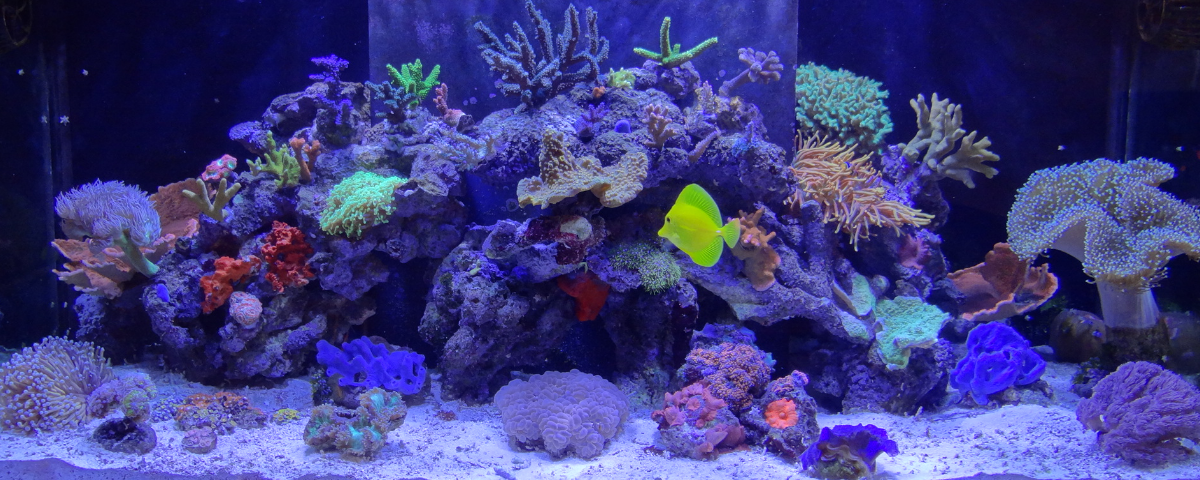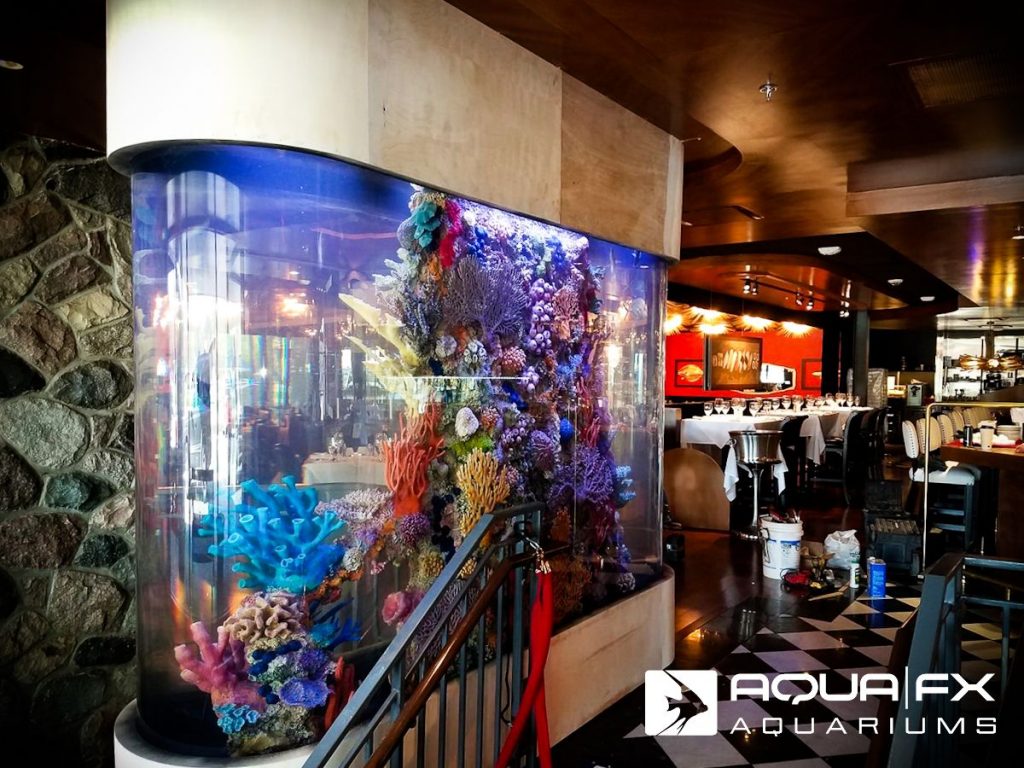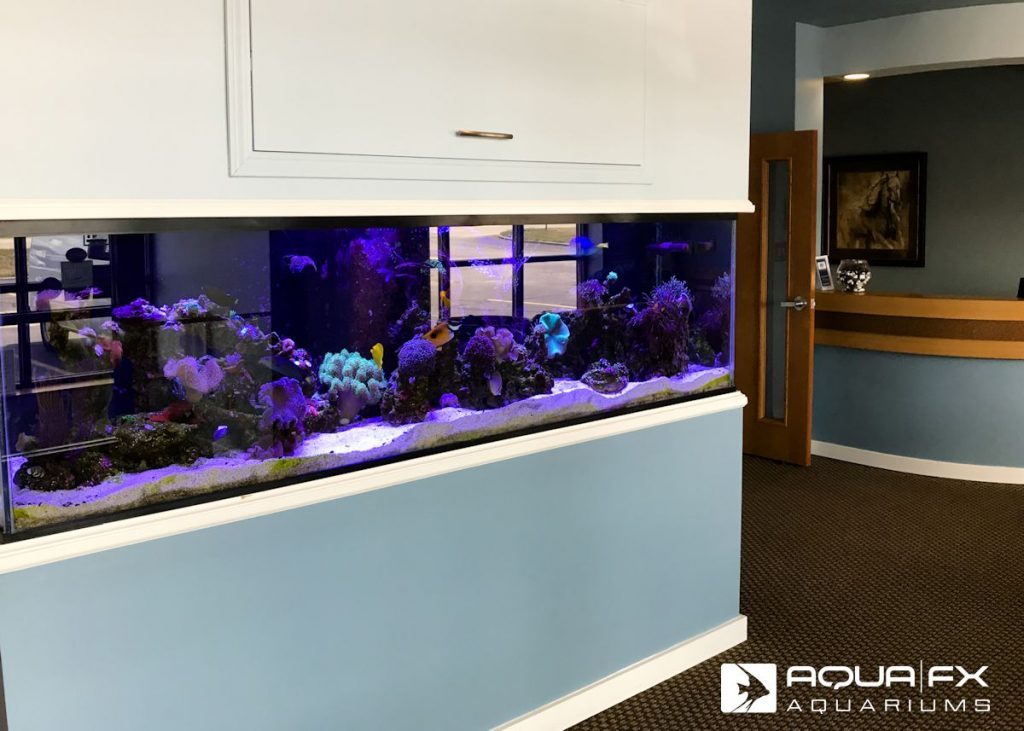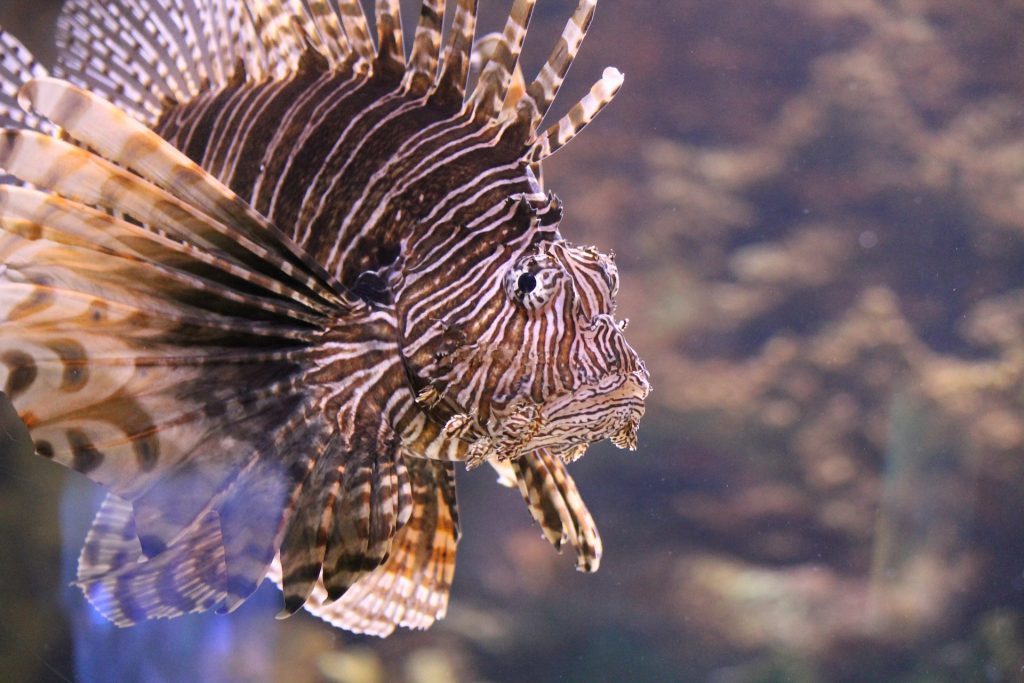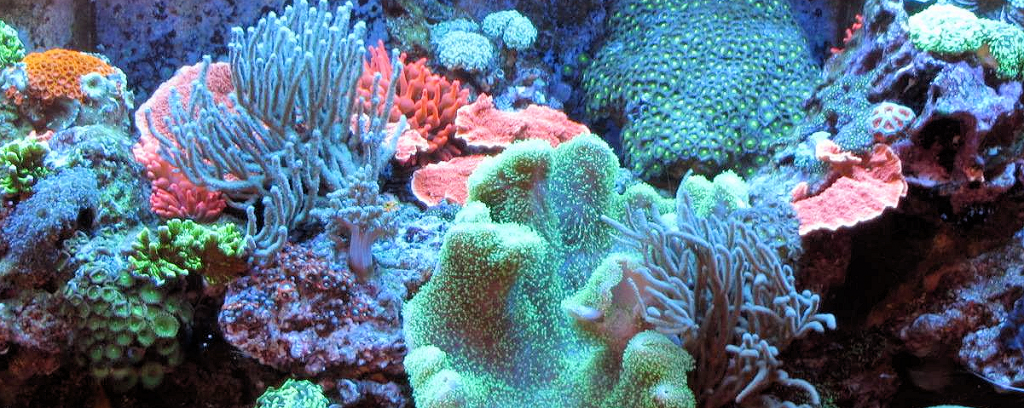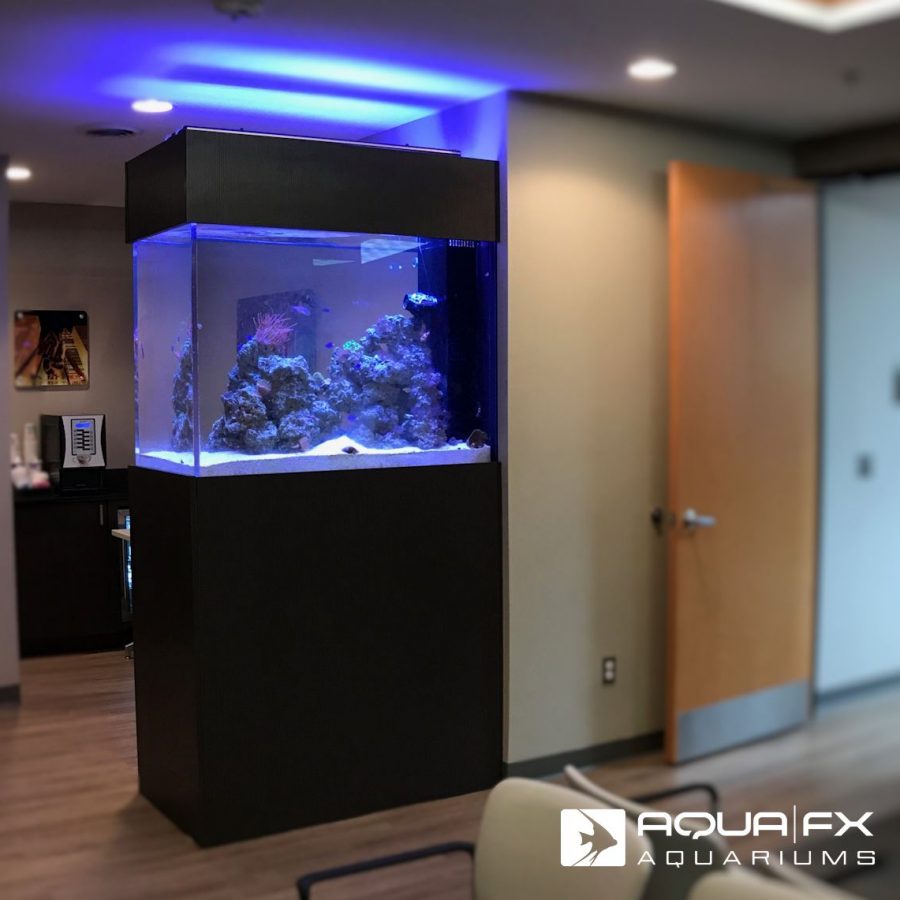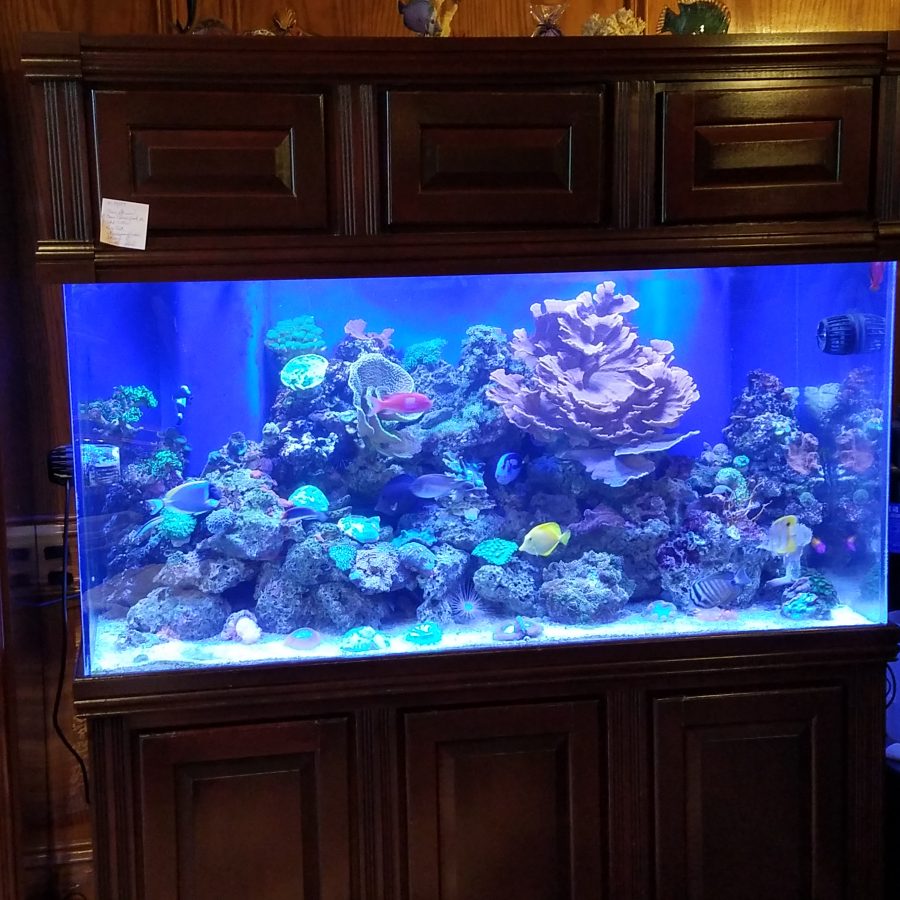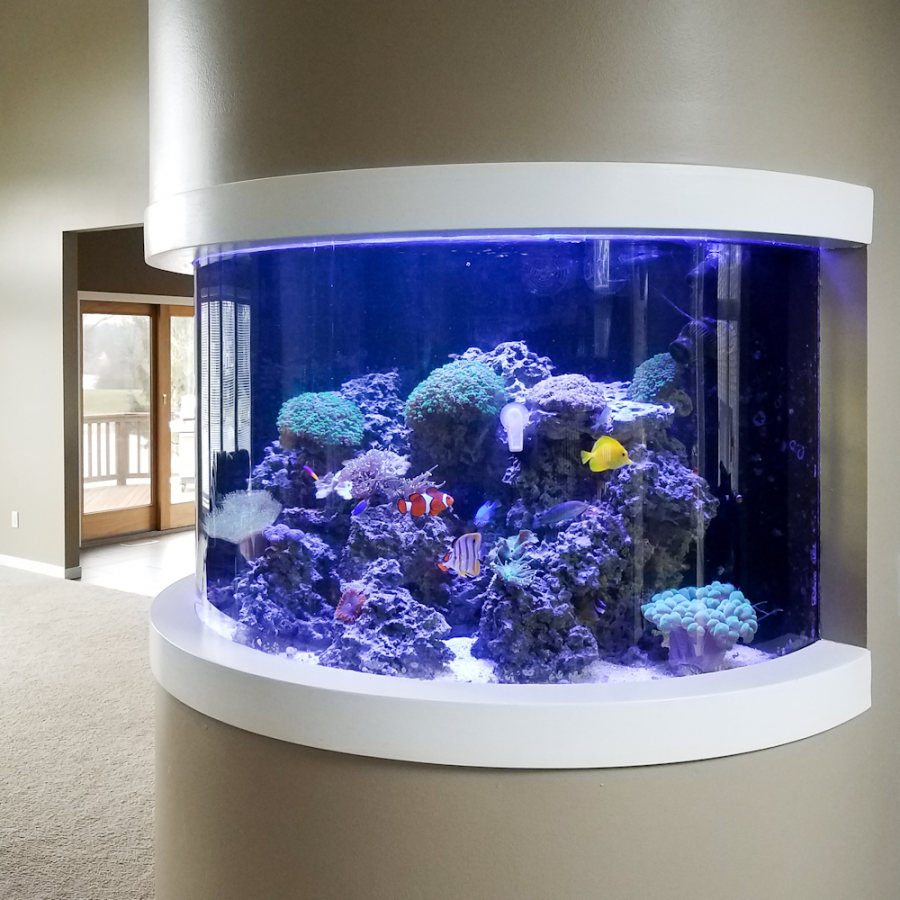When looking to start and buy an aquarium you have two choices, Glass or Acrylic. Each will hold water and your aquatic ecosystem equally well, so let’s take a look at the pros and cons of each fish tank material.
Acrylic Pros & Cons
Pros
Visual Distortion – Acrylic has nearly the same index of refraction as water. This means that when you see a fish in an acrylic tank, the light has only been bent once or twice. Because of this, the only distortion you are likely to see is that the fish is slightly misplaced, but the size and color are true.
Weight – Acrylic fish tanks are very lightweight. They are much easier to move around. Also, they don’t put as much of a strain on the structure which they are standing on as glass aquariums.
Shape – Acrylic is easily molded and formed into almost any shape that can be described – and some that can’t. Acrylic also has less of a tendency to distort things that are behind a curve. Because of these two factors, acrylic aquariums are available in a very large number of shapes – not just rectangular.
Strength – Acrylic tanks tend to be very strong. The material doesn’t need to be nearly as thick as glass to support the same amount of water. Acrylic is also less likely to break or damage.
Insulation – Acrylic is a better insulator in comparison to glass, making it easier to manage a consistent temperature ideal for reef and coral setups.
Cons
Scratches – if you own an acrylic tank, it will get scratches. Period. Acrylic is highly scratchable. While impact will not shatter them, pretty much anything will scratch them. Even fish and other inhabitants of the fish tank can easily scratch the acrylic with claws or teeth. You need to be very careful with cleaning and the placement of rocks and substrate, as scratching is definitely a big issue. Of course, acrylic is also easier to repair when it is scratched.
Cost – Acrylic tanks tend to be more expensive than glass tanks.
Glass Pros & Cons
Pros
Scratches – Glass is much harder to scratch than acrylic is. It is insanely hard to scratch a glass aquarium. You literally need to do it intentionally with something hard like a rock or metal for the glass to scratch. Thus, it maintains its clarity over long periods of time.
Support and Rigidity –Glass can support considerably more than its own weight over distances. Because of this, glass aquariums can be kept on stands with an open or incomplete top with little or no risk. Also, because of this rigidity, glass tanks require less structural support at the top to keep the tank from flexing or splitting its seams under the weight of the water. Giving you the option of an open top or rimless tank, allowing easier access to working inside the tank.
Cost– Typically glass aquariums, unless made of the higher quality Starfire Glass, tend to be cheaper than the acrylic alternative.
Starfire Glass – or low-iron glass – This type of glass achieves both amazing clarity and strong durability. Starfire glass is available in sizes up to 1 inch thick and is the most transparent option in the industry. It manages to have this clarity by only having as little as 10% of the iron content of other forms of glass. This allows over 90% of light to transmit through it compared to 83% for regular glass. The low iron content also greatly influences the green tint found in standard glass. This helps minimize the “greening” effect typically found in thick panels of glass – giving you the same color depth as Acrylic.
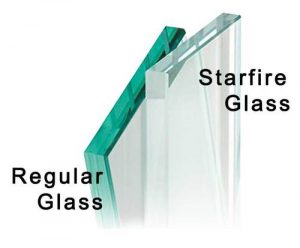
Cons
Weight – Glass is denser and therefore heavier than acrylic. A glass tank will often weigh 4-10 times as much as an acrylic tank of the same volume.
Visual Distortion – Glass has a different index of refraction than water. This means the as light passes through the air, then the glass, then the water to bounce off a fish and get reflected back through the water, then the glass, then the air, the light is bent four times. Each time the light is bent, the image is distorted. Colors are not quite true, position is not quite accurate, size can be distorted slightly. – Starfire glass greatly reduces this effect.
Breaking and Cracking – A sharp impact will crack – or in extreme cases, shatter – a glass tank, or at least one of its sides. While breaking a glass aquarium is still pretty hard, it’s easier than with an acrylic tank.
Shape – Glass is relatively rigid and brittle. Because of this, it is difficult to make aquariums from glass that are not rectangular in shape. Also, when glass is curved, it has a tendency to bend light even more, increasing distortion.
Insulation – Glass tanks tend to be heat sinks, meaning that they dissipate heat much quicker than acrylic aquariums.
Scratches – while glass much more scratch resistant than acrylic, a scratch in glass is permanent, while scratches in acrylic can be lessened and even removed by polishing.
SUMMARY
Both glass and acrylic have their advantages and disadvantages. Because Aqua FX Aquariums mostly creates large custom aquariums, we use acrylic almost exclusively because of its shapeability, weight and strength.

